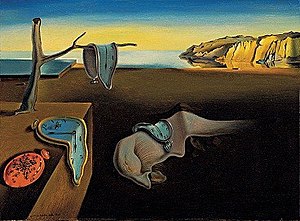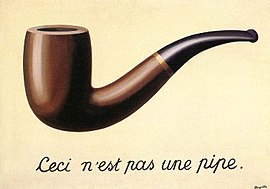
Photo from Wikipedia
The Surrealism Movement
Surrealism, emerging after World War I, rejected the logic and rationality that had dominated European thought, blaming them for the war’s devastation. Instead, it embraced the illogical and unexpected, seeking to unlock the unconscious mind’s creative power. Influenced by Freud’s psychoanalysis, Surrealism expressed the subconscious through irrational, dream-like imagery and abstract ideas, challenging conventional perceptions of reality.
In the business world, Surrealism’s profound impact extends beyond creativity and innovation into essential business functions.
Surrealism’s Broader Impact on Business
While Surrealism is widely recognized for driving creativity and innovation, its influence extends further into the business realm. Its impact is seen in various areas, such as:
- Leadership and Strategy: Surrealism’s focus on the irrational and exploration of uncharted territories encourages leaders to question reality and conventional thinking. By freeing themselves from traditional mental frameworks and constraints, this approach uncovers more innovative and resilient solutions and enhances agility in navigating uncertainty and responding swiftly to new opportunities or challenges.
- Workplace Culture and Organizational Design: Applying surrealist principles in organizations fosters open, non-hierarchical workplace cultures. By embracing non-linear thinking and inclusivity, companies create environments where employees are encouraged to express themselves, question assumptions, and break down silos. This approach promotes collaboration, experimentation, and innovation, leading to a more engaged and dynamic workforce.
- Consumer Psychology and Behavior Surrealism’s focus on the unconscious mind has influenced how businesses appeal to consumer desires. Marketing strategies inspired by surrealism evoke emotional, subconscious responses rather than rational ones, creating memorable and evocative connections in branding and customer experience.
Key Figures of the Surrealist Movement
Several influential figures shaped the Surrealist movement:
- André Breton (1896–1966): Considered the father of Surrealism, Breton’s Manifesto of Surrealism laid the intellectual foundation for the movement, advocating the exploration of the unconscious in both art and thought.
- Salvador Dalí (1904–1989): Known for his dream-like and often bizarre imagery, Dalí’s iconic works, such as The Persistence of Memory, exemplify Surrealism’s visual exploration of the unconscious. His eccentric personality also made him a cultural icon.
- Max Ernst (1891–1976): A pioneer of both Dadaism and Surrealism, Ernst’s work combined abstract forms with symbolic, dream-like imagery, influencing the visual aesthetics of both movements.

The persistence of memory (1931) by Salvador Dalí – photo from Wikipedia
The painting is small, measuring 24 x 33 cm, though people often perceive it as much larger. The creature in The Persistence of Memory is frequently interpreted as a distorted self-portrait of Salvador Dalí, resembling his own profile in a dream-like, unconscious state.
- René Magritte (1898–1967): Magritte’s art, including his famous painting The Treachery of Images, explores the relationship between words, images, and reality. His works challenge viewers’ perceptions and often serve as metaphors for deeper psychological exploration.
- Joan Miró (1893–1983): Known for his playful, abstract style, Miró blended surrealist and expressionist elements, creating works that evoke the spontaneity and subconscious whimsy at the heart of Surrealism.
- Man Ray (1890–1976): A key figure in both Dada and Surrealism, Ray used photography as a surrealist medium, producing avant-garde works that expanded the possibilities of visual representation.

The treachery of images (1929) by belgian surrealist painter René Magritte – photo from Wikipedia
In fact, viewers must recognize that this isn’t a pipe, but merely a painting of one, provoking us to question assumptions and rethink our perception of reality
Women in Surrealism
It is essential to highlight the uncommon role of women in shaping the Surrealist movement. At a time when the art world was predominantly male-dominated, the contributions of women like Leonora Carrington and Dora Maar were particularly noteworthy:
- Leonora Carrington (1917–2011): A British-Mexican artist, Carrington made pioneering contributions to Surrealism with her dreamlike paintings and exploration of the unconscious and mythology.
- Dora Maar (1907–1997): A French photographer and painter, Maar was a significant figure in Surrealism. Known for her evocative photography, including portraits of Picasso.
Unlocking Leadership Potential Through Surrealism
Surrealism’s influence extends into the business world by challenging conventional thought and embracing the unexpected. It fosters broader leadership, adaptable strategies, and deeper consumer connections. Exploring Surrealism provides valuable insights for leaders seeking to thrive in a dynamic and evolving environment.
Read the full article soon at Artcipation. Subscribe to the Artcipation Mailing List for updates and never miss a good history
* * *
Jose Taboada – Founder of Artcipation | Corporate Strategist
Key Sources: Centre Pompidou, THE MET
© 2024 Artcipation
Comment Article on:
Do you want to receive more information about this topic?
Subscribe our Mailing List today!
